Wonder, love and power. The botanical paintings richest in the world in the Lodge of Psyche by Raphael and Giovanni da Udine. Villa La Farnesina, Rome
50,00€ Il prezzo originale era: 50,00€.47,50€Il prezzo attuale è: 47,50€.
A pergola, painted by Raphael and Giovanni da Udine, inspires wonder in a place that embodies the aesthetic sensibility of one of Renaissance Europe’s wealthiest and most powerful patrons of art, and which is at the same time an architectural expression of conjugal and erotic love. Herein lies the motivation for this book, which is a homage to art and nature and an attempt to comprehend the sentiments that these extraordinary images would have inspired. The unrivalled design and beauty of the garlands framing the vaults of the Psyche Lodge helps to envision them as a bridge between the gardens outside and the sumptuous decorations inside the villa, while also enhancing their evocative power. Such an abundant biodiversity of botanical elements concentrated into a single work of art make this the world’s richest botanical display cabinet, both in terms of quantity and diversity of specimens, as well as in their breadth of geographical origin. There are, in fact, plants from throughout the known world and it is significant that these paintings represent the earliest documentation of the introduction in Europe of plants from America only twenty years after its discovery.
La Loggia di Psiche, affrescata da Raffaello e Giovanni da Udine alla Farnesina, è un pergolato di meraviglia, in un luogo che è l’espressione del sentimento artistico e dello straordinario potere raggiunto da un grande mecenate dell’arte, fra i più ricchi nell’Europa del Rinascimento, ma che è anche un luogo di amore, nella sua accezione matrimoniale ed erotica. Da qui il motivo di questo volume: un omaggio all’arte e alla natura, cercando di cogliere i sentimenti che questa rappresentazione assolutamente straordinaria avrebbe ispirato. I festoni che incorniciano le volte, certamente senza uguali per concezione e bellezza, oltre ad essere un raccordo fra il viridario esterno e la ricchezza espressiva degli interni del palazzo, intendono infatti suscitare molte suggestioni. La ricchissima biodiversità di elementi botanici raffigurati da Raffaello e Giovanni da Udine e concentrati in una sola opera fa sì che essa rappresenti la sala botanica più ricca del mondo, sia in senso qualitativo che quantitativo e della ampiezza delle origini geografiche. Ci sono infatti piante provenienti da tutto il mondo allora conosciuto ed è certamente di rilievo il fatto che queste pitture siano la prima documentazione dell’introduzione in Europa di piante americane ad appena vent’anni dalla scoperta di quel continente.
WONDER, LOVE AND POWER
The botanical paintings richest in the world in the Lodge of Psyche by Raphael and Giovanni da Udine. Villa La Farnesina, Rom
MERAVIGLIA, AMORE E POTERE
Le pitture botaniche più ricche del mondo nella Loggia di Psiche di Raffaello e Giovanni da Udine. Villa La Farnesina, Roma
Autore/Author: Giulia Caneva
Pagine/Pages 390. Brossura con bandelle/Paperback. Formato/Size 21×27 cm. Illustrato con 400 fotografie a colori/Illustrated with 400 color images. Novembre/November 2022
ENGLISH AND ITALIAN TEXT
GIULIA CANEVA è Professore Ordinario di Botanica ambientale ed applicata presso il Dipartimento di Scienze dell’Università di Roma Tre. Ha una vasta attività di ricerca sulla vegetazione mediterranea e sulla biologia vegetale applicata alla conservazione e valorizzazione dei beni culturali materiali e immateriali svolta in diversi progetti nazionali e internazionali (Moenjodaro, Pakistan; Chengdè, China; Copàn, Honduras; Joya De Cerèn, El Salvador; Martvili, Georgia; Ta Nei Temple- Angkor Cambodia; Cappadocia Churches, Turkey; Bali Aga villages, Indonesia; Mrauk U, Myanmar; Ancient Tombs of South Korea; Pasargadae, Iran). Vincitrice della XI Edizione del Premio Giacomo Lumbroso (Fondazione Besso, 2011, Roma) e del Gran Prix for Cultural Heritage (Comunità Europea-Europa Nostra, 2012, Lisboa) per il volume Il Codice Botanico di Augusto e del Premio “Arte e Scienza” (Società Nazionale Scienze, Lettere e Arti, 2019 Napoli). Autrice di circa 320 articoli nazionali e internazionali e di 24 testi monografici.
GIULIA CANEVA Is full Professor of Environmental and Applied Botany at the Department of Science, Roma Tre University. Her wide research activity is mainly focussed on the Mediterranean vegetation and on plant biology applied to the conservation and enhancement of cultural heritage in many national and international projects (Moenjodaro, Pakistan; Chengdè, China; Copàn, Honduras; Joya De Cerèn, El Salvador; Martvili, Georgia; Ta Nei Temple- Angkor Cambodia; Cappadocia Churches, Turkey; Bali Aga villages, Indonesia; Mrauk U, Myanmar; Ancient Tombs of South Korea; Pasargadae, Iran). Winner of several awards: XI Edition of the award Giacomo Lumbroso (Besso Foundation, 2011, Roma), the Gran Prix for Cultural Heritage of the European Union – Europa Nostra, (Lisboa, 2012) for the book The Augustus botanical code; Art and Science of the National Society for Science, Letters and Arts (2019, Napoli). She is the author of about 320 national and international publications and 24 books.
INDEX/CONTENTS
Presentation, Lucia Tongiorgi Tomasi
Foreword, Giulia Caneva
Part I
HISTORY AND SOURCES
OF AN EXTRAORDINARY WORK
Ch. 1
Magnus Mercator: projects and decisions for his private residence
Agostino the Magnificent: the great merchant of Renaissance Europe
The design and development of his residence in Rome
The design
Later history of the villa and sale to the Farnese family
The Loggia of Psyche: design, myth and interpretations
The design of the Loggia
Apuleius and the tale of Cupid and Psyche
Interpretations of the novel
Ch. 2
A botanical setting for Cupid and Psyche
The artist: Giovanni da Udine in Raphael’s Workshop
The frescoes and the extraordinary botanical wealth of the garlands
Symbolism and the doctrine of signatures
The intentions of the Loggia and of the opulent garlands
Giovanni da Udine: biographical details
The Loggia’s exceptional flora: the richest botanical display chamber in the world
Floristic List
The visual representation of the Mith and its “botanical frame”
Part II
The MESSAGE ENTRUSTED TO THE WORLD OF PLANTS
Ch. 3
Plants as instrument of wonder Hitherto unknown fruits
MAIZE
LARGE PUMPKIN AND MUSKY PUMPKIN
ROUND COURGETTE
COMMON BEAN
Magical and talismanic plants
WILD MORNING GLORY
BLADDER CHERRY
BALSAM APPLE
COCONUT
ITALIAN ARUM
WATER CHESTNUT
GREAT MULLEIN
Powerful healing plants
ALOE
GOLDEN SHOWER TREEE
SEA SQUILL
WILD RUE
Rare and unusual plants
SQUIRTING CUCUMBER
EUROPEAN FAN PALM
HOUSELEEKS
Mystery and magic: Mushrooms
Ch. 4
Symbols of Love and marriage
Flowers and fruits dedicated to Venus
ROSES
WILD ROSES
POET’S NARCISSUS
POPPY ANEMONE
ELECAMPANE
APPLE
APRICOT
MULBERRY
Flowers and fruits dedicated to Juno
LILY
JASMINE
PEARS
QUINCE
PEACH
The Hesperides and the hesperidia
LEMON AND LUMIA
BITTER ORANGE AND CHINOTTO SOUR ORANGE
CITRON, LIME AND BERGAMOT ORANGE
Other flowers sacred to the gods and ornamental garden flowers
IRIS
CARNATION
COMMON HOLLYHOCK
CHINESE HIBISCUS
WALLFLOWER
LILAC
SAINT BERNARD’S LILY
POT MARIGOLD
FIELD BINDWEEDS
OLD MAN’S BEARD
AUTUMN SNOWFLAKE AND SNOWDROP
PERSIAN BUTTERCUP
VARIOUS CHAMOMILES AND MEADOW FLOWERS
Ch. 5
Fruits as Symbols of prosperity and fortune
The plants of Ceres
WHEAT
POPPY
Plants of the Great Mother Goddess Cybele and symbols of fertility
PINECONES
POMEGRANATE
MELONS
WATERMELON
CHESTNUT
ALMOND
The plants of Bacchus and Priapus as emblems of virility
GRAPEVINE
IVY
FIG
CLUB GOURD
AUBERGINE
CUCUMBER
BROAD BEAN
PEA
Symbols of power, life and victory
OAK ACORNS
OLIVES
DATE PALM
LAUREL
Plants of health and good fortune
BOTTLE GOURD
CHERRY
STRAWBERRY TREE
PRUNES
COMMON MEDLAR
WALNUT
HAZELNUTS
GALBULI OF CYPRESS
Ch. 6
“Omnia fruges”: food and prosperity from around the world
Cereals in the ancient world
BARLEY
MILLET
SORGHUM
The ‘meat’ of the people: the minor legumes
CAROB
LUPIN
Common vegetables: fruit, leaves and roots
from the garden
ARTICHOKE AND CARDOON
CABBAGE
ENDIVE AND CHICORY
FENNEL
ASPARAGUS
GARLICS
LEEKS
SHALLOT
ONION
BEET
TURNIP
RAPESEED
RADISH
BLACK SALSIFY
CARROT
PARSNIP
CELERY
PARSLEY
Wild vegetables
THISTLES
CARLINE THISTLES
WILD SPINACH
ASPHODEL
COMMON MALLOW
COMMON DANDELION
Common countryside plants and fruits
SORB
JUJUBE
DOGWOOD
ELDERBERRY
CLOVER
Plants and fruits that inhabit mountains and hilly environments
HAWTHORN
BLACKBERRY
STRAWBERRY
REDCURRANT
BLUEBERRY
Plants used by craftsmen and in the home
FULLER’S TEASEL
COMMON BULLRUSH
COMMON SOAPWORT
BROOM MILLET
Bibliography
Index of species
———————
INDICE
Presentazione, Lucia Tongiorgi Tomasi
Introduzione, Giulia Caneva
Prima parte
Storia e fonti di un’opera straordinaria
Cap. 1
Il Magnus Mercator: progetti e scelte per la sua residenza privata
Agostino il Magnifico: il grande mercante dell’Europa Rinascimentale
Progetto e vicende della sua residenza romana
Il progetto del palazzo
Le vicende storiche e il passaggio alla famiglia Farnese
La Loggia di Psiche di Raffaello: il progetto, il racconto e le sue interpretazioni
Il progetto della Loggia
Il racconto di Apuleio e la favola di Amore e Psiche
Le interpretazioni della novella
Cap. 2
Una cornice botanica per Amore e Psiche
L’artista: Giovanni da Udine nella Scuola di Raffaello
L’opera e la straordinaria ricchezza botanica dei festoni
Simbolismo e segnature delle piante
Gli obiettivi della loggia e di questo mirabile pergolato
Giovanni da Udine: cenni biografici
L’eccezionale flora della Loggia: la camera botanica “più ricca del mondo”
Elenco floristico
La rappresentazione del Mito e la sua “cornice botanica”
Seconda parte
IL MESSAGGIO AFFIDATO AL MONDO VEGETALE
Cap. 3
Le piante come strumento di meraviglia
Frutti visti per la prima volta
GRANTURCO
ZUCCHE MAGGIORI E MUSCHIATE
ZUCCHINE
FAGIOLI
Piante magiche e scaramantiche
VILUCCHIONI
ALCHECHENGI
MOMORDICA
NOCI DI COCCO
PAN DI SERPE
TRIBOLI
TASSO BARBASSO
Piante guaritrici di grandi potere
ALOE
CASSIA
SCILLA MARITTIMA
ARMEL
Piante insolite e curiose
COCOMERO ASININO
PALMA NANA
SEMPREVIVI
Mistero e magia: i funghi
Cap. 4
I simboli dell’amore e del matrimonio
Fiori e frutti di Venere
ROSE
ROSE SELVATICHE
NARCISI
ANEMONE
ELENIO
MELE
ALBICOCCHE
GELSI
Fiori e frutti di Giunone
GIGLI
GELSOMINO
PERE
COTOGNE
PESCHE
Le Espèridi e gli esperìdi
LIMONI E LUMIE
ARANCI AMARI E CHINOTTI
CEDRI, LIMETTE E BERGAMOTTI
Altri fiori sacri agli dei e ornamento dei giardini
IRIS
GAROFANI
MALVONE
IBISCO
VIOLACCIOCCHE
Lillà
LILIOASFODELI
CALENDULA
VILUCCHI
CLEMATIDE
CAMPANELLE D’AUTUNNO E BUCANEVE
RANUNCOLI
MARGHERITE VARIE E FIORI DI CAMPO
Cap. 5
Frutti come simboli della prosperità e della fortuna
Le piante di Cerere
GRANO
PAPAVERI
Le piante della Grande Madre e i simboli della fertilità
PIGNE
MELAGRANE
MELONI
COCOMERI
CASTAGNE
MANDORLE
Le piante di Bacco e Priapo come emblemi della virilità
UVA
EDERA
FICHI
ZUCCHE A BASTONE
MELANZANE
CETRIOLI
FAVE
PISELLI
I simboli del potere, della vita e della vittoria
GHIANDE DI QUERCE
OLIVE
DATTERI
ALLORO
Le piante della salute e della buona sorte
ZUCCHE A FIASCO
CILIEGIE
CORBEZZOLI
PRUGNE
NESPOLE
NOCI
NOCCIOLE
GALBULI DI CIPRESSO
Cap. 6
“Omnia fruges”: cibo e prosperità da tutto il mondo
I cereali del mondo antico
ORZO
PANICO
SORGO
La carne del popolo: i legumi minori
CARRUBE
LUPINI
Ortaggi comuni: frutti, foglie, bulbi e radici dell’orto
CARCIOFI E CARDONI
CAVOLO CAPPUCCIO
ENDIVIE E CICORIE
FINOCCHI
ASPARAGI
AGLI
PORRI
SCALOGNI
CIPOLLE
BARBABIETOLE
RAPE
NAVONI
RAFANI
SCORZONERE
CAROTE
PASTINACHE
SEDANO
PREZZEMOLO
Verdure selvatiche
CARDI E SCARLINE
CARLINE
SPINACI SELVATICI
ASFODELI
MALVA
TARASSACO
Piante e frutti comuni del mondo rurale
SORBE
GIUGGIOLE
CORNIOLE
SAMBUCO
TRIFOGLIO
Piante e frutti degli ambienti montani e collinari
BIANCOSPINI
MORE
FRAGOLE
RIBES
MIRTILLI
Piante utili ad uso dei mestieri e della casa
CARDO DEI LANAIOLI
LISCA MAGGIORE
SAPONARIA
SAGGINA
Referenze bibliografiche
Indice delle specie
————————
Recensisci per primo “Wonder, love and power. The botanical paintings richest in the world in the Lodge of Psyche by Raphael and Giovanni da Udine. Villa La Farnesina, Rome” Annulla risposta
Devi effettuare l’accesso per pubblicare una recensione.
Ti potrebbe interessare…
Strumenti - Manuali
La Biologia Vegetale per i Beni Culturali – Vol. I. Biodeterioramento e Conservazione
Art and Restoration
Grandi opere


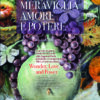
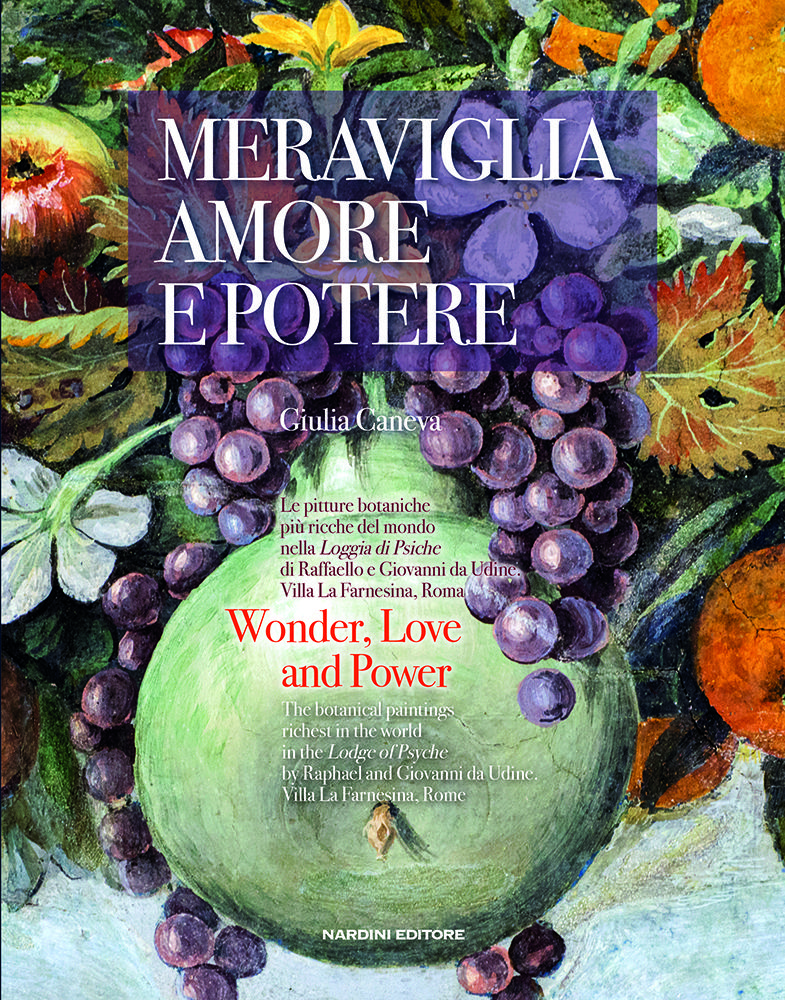
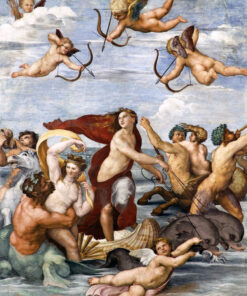
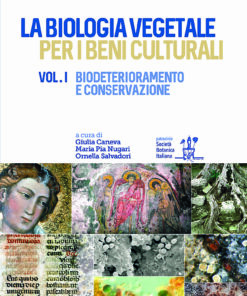
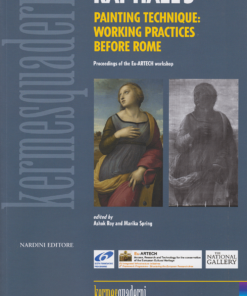
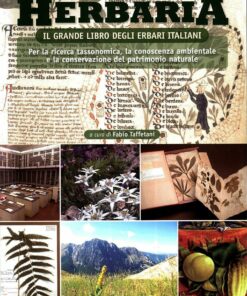
Recensioni
Ancora non ci sono recensioni.